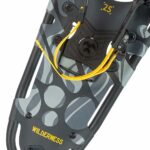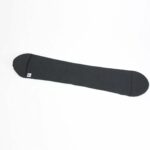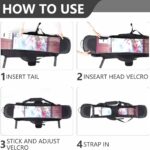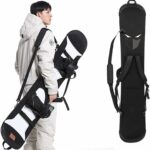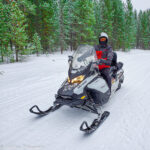Venturing out into the pristine, white wilderness atop your snowmobile can be an exhilarating experience. Still, it’s crucial to approach your adventure with care and consideration. This article will guide you through the essentials you need to take on your snowmobile journey. From safety gear to repair items, it will cover everything necessary to ensure that your ride is not only fun but also safe and well-prepared.
Essential Clothing
When setting out on a snowmobiling adventure, starting with the basics, you want to ensure that you are adequately dressed. Essential clothing items can make the difference between a comfortable ride and a miserable one.
Proper Body Layering
Proper layering techniques can keep you warm and dry on your snowmobiling journey. Your base layer should be moisture-wicking to pull sweat away from your skin, the middle layer for insulation, and the outer layer to protect you from wind and snow. Remember, it’s better to have too many layers and need to shed a few than to be freezing out in the cold.
Insulated Boots
Your feet are going to be in constant contact with your snowmobile, so keeping them warm and dry is crucial. Insulated boots are your best bet. They provide the necessary warmth and are usually waterproof, making them ideal for snowmobiling.
Face Masks
Face masks protect your face from wind chill, spitting snow, and sunlight reflecting off the white snow. Consider masks that can cover your entire face or at least most parts of it.
Glove Liners and Mittens
Your hands are going to be exposed to the elements while you are driving. Thin glove liners can provide an added layer of insulation under your mittens. Mittens generally keep your hands warmer than gloves, but try to pick a pair that doesn’t compromise your grip or ability to control the snowmobile.
Thermal Socks
Don’t underestimate the power of thermal socks when it comes to keeping your feet warm! Thermal socks made from materials like merino wool can keep your feet cozy and dry by wicking away any moisture.
Safety Equipment
Apart from clothing, your safety equipment is yet another crucial aspect to consider for your snowmobiling experience.
Helmet
A helmet is non-negotiable. It protects you from head injuries in case of an impact or fall. Select a helmet that’s designed for snowmobiling, providing protection and warmth without compromising visibility.
Goggles
Goggles are necessary to protect your eyes from the wind, snow glare, and branches. Make sure they are anti-fog and are tinted for better visibility on sunny days.
Safety Harness and Cords
Safety harnesses and safety cords can prove beneficial. The safety cord ensures the snowmobile turns off if you inadvertently fall off or get separated from it. A harness can help prevent injuries in case of an accident.
Avalanche Airbag
An avalanche airbag can be a life-saving piece of equipment in avalanche-prone areas. If triggered, it inflates and keeps the rider afloat, reducing the risk of being buried under the snow.
First Aid Kit
A first aid kit is another critical safety gear. It should include essentials like band-aids, antiseptic wipes, medications, and other emergency aid items.
Having tools that assist with navigation is key when you’re out in the wilderness, snow-blinded under a white sky.
GPS Device
A GPS device is an excellent tool for location tracking and finding routes. It can provide you with an accurate location, especially in low visibility conditions.
Compass
Even with a GPS device, a traditional compass is handy as a backup. It’s lightweight, doesn’t rely on a battery, and can help you get your bearing if you’re lost.
Physical Maps
Physical maps don’t rely on signals or batteries and can help you navigate unfamiliar terrain. Make sure the map covers all the areas you plan to snowmobile in.
Trail Marker
Trail markers can be a valuable tool in marking your route or significant areas easily seen, especially if you plan to return to that spot or for marking areas to avoid.
Repair Tools and Spare Parts
It’s a splendid idea to carry repair tools and parts during a snowmobiling trip because you never know when you might need them.
Pocket Tool Kit
A compact toolkit can help you make quick fixes on the go. It should include items like a screwdriver, wrench, pliers, and other snowmobile-specific tools.
Spare Drive Belt
The drive belt is a critical component of your snowmobile which can break or wear out. Carrying a spare could save you from being stranded in the cold.
Spark Plugs
While spark plugs are generally reliable, in colder conditions, the chances of them failing increase. Having spare spark plugs is always a good idea.
Tow Straps
If your snowmobile breaks down and can’t be fixed on site, tow straps can be used to pull the snowmobile to safety.
Communication Devices
In case of an emergency or to stay connected with your group, communication devices are an essential part of snowmobiling gear.
Satellite Phone
Satellite phones offer the most reliable service in remote areas, outside mobile network zones. They can be instrumental in case of emergencies.
Two-Way Radios
Two-way radios are perfect for keeping in touch with someone close by, such as your riding partner. They don’t require a cell signal and can be crucial in areas of poor network coverage.
Survival Gear
When you’re out snowmobiling, especially if you’re going off-track, carrying survival gear can be vital.
Space blanket
Also known as a thermal blanket, it can retain most of your body heat, keeping you warm in case of emergencies or if you need to spend the night outdoors.
Emergency Flares
Flares can be used to signal for help if you’re stranded or lost. They are visible from a great distance and could attract help.
Food and Beverage
Always carry food and drink for sustenance. This can range from simple snacks like nuts and dried fruit to energy bars and gel fuels.
Portable Stove
A portable stove can be beneficial for heating food or melting snow for drinking water.
Sleeping bag
If you need to spend the night outdoors, a good quality, low-temperature-rated sleeping bag is essential.
Hydration and Nutrition
Staying hydrated and well-nourished during your snowmobiling trip is crucial, not just for your comfort, but for your safety too.
Water Purification Tablets
These can be used to treat snowmelt or natural water sources, making them safe to drink.
Portable Water Filter
A portable water filter removes impurities from water sources, making it safe to drink. It’s highly recommended if you’ll be traveling through areas where water quality is a concern.
Energy Bars
Energy bars are a compact and easy-to-carry source of nutrients. They can provide a quick energy boost when you’re on the trail.
Thermos Flask
A thermos flask can keep your beverages hot for hours, providing much-needed warmth and energy while on the trail.
For Overnight Trips
If you’re planning an overnight snowmobile trip, ensure you pack the following additional items.
Tent or Bivy Sack
A tent provides shelter and warmth when you’re spending the night in the wilderness. If your gear needs to be lightweight and compact, a bivy sack is a good alternative.
Sleeping Pad
Sleeping directly on the snow can be cold and uncomfortable. A sleeping pad provides a layer of insulation between you and the ground, resulting in a warmer and better night’s sleep.
Flash/Headlight
A flashlight or headlight can help you navigate or perform tasks like setting up a tent or cooking after dark.
Multifuel Stove
A multi-fuel stove provides a way to cook meals or melt snow for drinking water. It’s a versatile device as it can run on various types of fuel.
Snowmobiling Accessories
Specialized snowmobile accessories enhance your riding experience and provide additional comfort.
Snowmobile Cover
A snowmobile cover protects your vehicle when it’s not in use. It safeguards the snowmobile from snow, ice, and damaging UV rays.
Handlebar Muffs
Handlebar muffs provide extra warmth for your hands and protect them from the biting wind and cold while you ride.
Windshield Bags
Windshield bags offer a useful and convenient storage solution. They attach to the snowmobile’s windshield and provide easy access to essentials like gloves, goggles, and maps.
Carrying Bag Options
Selecting the right carrying bag for your gear is crucial. Your choice will depend on how much gear you’re carrying and personal preference.
Backpacks
Backpacks are an excellent option for carrying smaller items as they distribute the weight evenly and are easily accessible while riding.
Tunnel Bags
Tunnel bags attach directly to the snowmobile, providing ample storage for gear without affecting the rider’s comfort or mobility.
Saddlebags
Saddlebags are mounted on each side of the snowmobile. They are more prominent than tunnel bags and can carry larger items.
In conclusion, understanding and planning what to carry on a snowmobile trip can enhance your security and experience. With the right gear, you can be prepared for anything the trail throws at you, ensuring a memorable adventure.
- What Snowboard Bindings Should I Get? - January 23, 2024
- What Size Screws For Snowboard Bindings? - January 23, 2024
- How To Snowmobile On Water? - January 23, 2024

